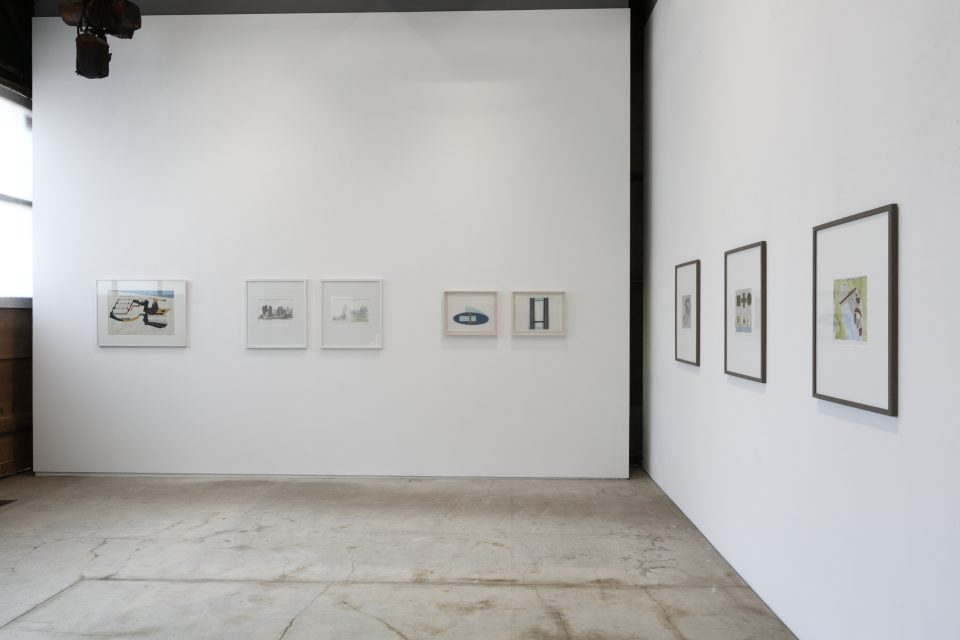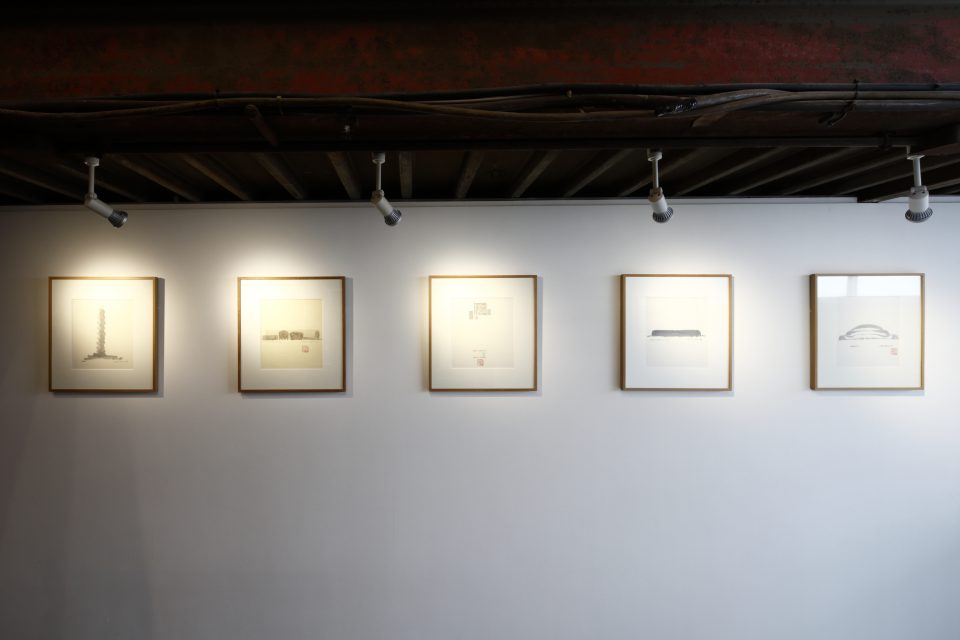
Isozaki Arata “Primordial Line” 2017
Installation view at MISA SHIN GALLERY
Photo: Keizo Kioku

Isozaki Arata “Primordial Line” 2017
Installation view at MISA SHIN GALLERY
Photo: Keizo Kioku
Isozaki Arata 磯崎 新
Primordial Line 一本の線
Date: Thursday May 18 – Saturday July 8, 2017
PRESS RELEASE
Download Press release (English)
The primordial line is the basis of all things and the root of a myriad phenomena; it encompasses the infinity of creation. Shi Tao, Huayu Lu (Comments on Painting)
A bunjin—a member of the literati or ‘man of arts and letters’—can be defined as a connoisseur of appraisal, collection and knowledge who takes delight in calligraphy, painting, koto, and go, but who is not a professional bureaucrat. The expertise of bunjin in poetry and prose, written to be exchanged amongst friends, was developed as a leisure pursuit unassociated with the requirements of the state. Skillfulness in the arts was not employed as a profession, but as an amateur pastime conducted by people who were devoted to the ink, brush, ink-stone, and paper. Shi Tao, who lived in the turbulent times of the Ming-Quing transition, was one of the bunijin, living independently and unassociated with a formal academy. He developed his own ideas on painting, which he set down in Huayu Lu (Comments on Painting). This includes a chapter on the single brushstroke or primordial line, which is a key to understanding Isozaki’s approach to drawing.
As an architect, Isozaki works on architecture and urban planning projects around the world, including Europe, America, the Middle East, Central Asia, China, and Japan. However, the thoughts that inspire his work come from outside architecture. His conceptual process has habitually transcended the framework of architecture to involve areas such as philosophy, art, design, music, movies, and theater, creating solutions that blend different periods and geographical regions. To Isozaki, drawing a line, regardless of whether it is for an architectural sketch or for a record of his travels, may be the moment when the first inkling of a new thought is produced.
Swapping his camera for a sketchbook as his traveling companion, Isozaki penciled the outline of the Santa Maria Novella in Florence, capturing his personal view of the church, and sketched the karst topography of Guilin from a boat, like a bunjin who, instead of settling in one place, traveled around in a calligraphy boat that became his studio and gallery. Delighted by the vividness of pastel pigments, he used them to draw his proposal for the Donau City Twin Tower in Vienna. And his use of watercolors for projects in China from 2000 onwards represents a homage to the bunjin realized through his own architecture.
‘Primordial Line’ explores the relationship between Arata Isozaki’s architecture and his drawings. We look forward to seeing you at the exhibition.
Isozaki Arata
Born in Oita, Japan in 1931. Graduated from Architectural Faculty of University of Tokyo in 1954. Established Arata Isozaki & Associates in 1963. As a leading international figure in architecture, Isozaki has designed numerous works such as the Museum of Modern Art, Gunma, the Museum of Contemporary Art in Los Angeles, and Palau Sant Jordi, 1992 Barcelona Summer Olympic Games Stadium. Recent works include Qatar National Convention Center, Allianz Tower in Milan, Shanghai Symphony Hall, Hunan Provincial Museum, University of Central Asia, and Urban design of Zhengzhou City, Henan Province in China. He served as commissioner of Japanese Pavilion, Biennale di Venezia International Exhibition of Architecture. He is active in curating architecture and art exhibitions worldwide. He has juried many international architectural design competitions and also acted as a chairman at symposiums. Recent exhibitions include a solo exhibition ”Solaris” NTT InterCommunication Center [ICC] (Tokyo 2013), “Metabolism: The City of the Future” Mori Art Museum (Tokyo 2015), “Japan Architects 1945-2010” 21st Century Museum of Contemporary Art, Kanazawa (2014), “The Emergence of Contemporary: Avant-Garde Art in Japan 1950-1970” Paço Imperial (Rio de Janeiro 2016).
